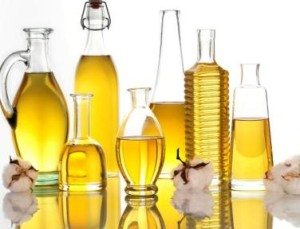


இது வெயில் காலம். செயற்கை மென்பானங்களுக்குப் பொற்காலம். நம்மில் மென்பானங்களைக் குடிக்க விரும்பாதவர்களை விரல்விட்டு எண்ணிவிடலாம்.
மென்பானங்களின் தித்திப்பான ருசியும், கண்ணைக் கவரும் வண்ணங்களும் நம்மை மயக்கிவிடுகின்றன. போதாக் குறைக்கு 'மென்பானங்களைக் குடித்தால் புத்துணர்வு கிடைக்கிறது' என்று பொய் சொல்லும் ஊடக விளம்பரங்களும் நமக்குப் போதை ஏற்றிவிடுகின்றன.
இந்த மென்பானங்கள் நம் தாகத்தைத் தணிக்க உதவுகின்றன என்பது உண்மை என்றாலும், இவற்றால் நமக்கு எத்தனை கெடுதல்கள் என்பதை நினைத்துப் பார்க்க மறந்துவிடுகிறோம்.
மென்பானம் என்பது எது?
மென்பானம் (Soft drinks) என்பது அதிக அளவில் ‘ஃபிரக்டோஸ்' எனும் சர்க்கரையும் கார்பன்-டை-ஆக்சைடும் கலக்கப்பட்ட ஒரு பானம். இதில் எந்தவொரு ஊட்டச்சத்தும் இல்லை. இதைக் குடிப்பதால் சக்தியும் கிடைப்பதில்லை. இது ஆரோக்கியமும் அளிப்பதில்லை.
மென்பானங்களின் சுவையை மேம் படுத்துவதற்காக, காஃபீன் எனும் வேதிப்பொருளைச் சேர்க்கிறார்கள்; இனிப்பை நிலைப்படுத்துவதற்காகச் சிட்ரிக் அமிலம், பாஸ்பாரிக் அமிலம் போன்றவற்றைக் கலக்கிறார்கள்; வண்ணமூட்டுவதற்காக கேராமல் மற்றும் பீட்டா கரோட்டீனை பயன்படுத்துகிறார்கள். தவிர மென்பானங்களில் செயற்கைச் சுவை யூட்டிகள், செயற்கை நிறமூட்டிகள், பதப்படுத்தப் பயன்படும் பொருள்கள் ஆகியவை அதிக அளவில் உள்ளன. இவை ஒவ்வொன்றும் ஒவ்வொரு விதத்தில் நம் உடல் உறுப்புகளுக்கு ஆபத்தைத் தருகிறது.
இளம் வயதிலேயே சர்க்கரை நோய்!
மென்பானங்களில் உள்ள ‘ஃபிரக்டோஸ் கார்ன் சிரப்' எனும் சர்க்கரை ரத்தத்தில் கலந்து உடல் முழுவதும் பாய்கிறது. அப்போது ரத்தச் சர்க்கரை அதிகரிக்கிறது. உடலின் வளர்சிதைமாற்றப் பணிகளைப் பாதிக்கிறது. இதைக் கட்டுப்படுத்தக் கணையத்திலிருந்து இன்சுலின் அதிக அளவில் சுரக்கிறது. அடிக்கடி மென்பானங்களை அளவில்லாமல் குடிப்போருக்கு இன்சுலினும் அடிக்கடி அதிகமாகச் சுரப்பதால், இளம் வயதிலேயே கணையம் களைத்துவிடுகிறது. இதன் விளைவால், இன்சுலின் சுரப்பு குறைந்து, இளமையிலேயே நீரிழிவு நோய் வந்துவிடுகிறது. நம் நாட்டில் 'டைப் டூ நீரிழிவு நோய்' இளைஞர்களுக்கும் இளம்பெண்களுக்கும் அதிகமாகி வருவதற்கு மென்பானம் குடிப்பது முக்கியக் காரணம் என்கிறது ஒரு ஆய்வு.
குழந்தைகளுக்கு உடற்பருமன்!
தினமும் மென்பானம் குடிக்கும் குழந்தைகளில் 60 சதவீதம் பேர் அடுத்த ஒன்றரை ஆண்டுகளில் உடல் பருமனால் பாதிக்கப்படுகின்றனர். மென்பானம் குடிக்கும்போது ரத்தச் சர்க்கரை அளவு அதிகரிக்கிறது அல்லவா? இந்தச் சர்க்கரை கல்லீரலில் கொழுப்பாக மாற்றப்பட்டு, உடலில் சேமித்து வைக்கப்படுகிறது. இப்படிப் படிப்படியாகச் சேமிக்கப்படும் கொழுப்பு, உடற்பருமனை உண்டாக்குகிறது. இந்த உடற்பருமன் இளம் பருவத்திலேயே இதய நோய், உயர் ரத்தஅழுத்தம், சிறுநீரக நோய் என்று பல்வேறு பிரச்சினைகளுக்கு அடித்தளம் அமைக்கிறது. இந்தியாவில் குழந்தைகளுக்கு நீரிழிவு நோய் ஏற்படுவதற்கும், குண்டுக் குழந்தைகளின் எண்ணிக்கை அதிகமாவதற்கும் மென்பானங்களே முக்கியக் காரணம் என்பதை மத்திய சுகாதாரத் துறையே ஒப்புக்கொண்டுள்ளது.
பற்களின் ஆயுள் குறையும்!
மென்பானங்களில் உள்ள பாஸ்பாரிக் அமிலம் பல்லின் மேற்பூச்சாக இருக்கின்ற எனாமலை மிக விரைவாக அரித்துவிடுவதால், பற்சிதைவு உண்டாகிறது. பல்லின் ஆயுள் குறைகிறது. சீக்கிரமே பற்கள் விழுந்துவிடுகின்றன.
பாஸ்பாரிக் அமிலத்தால் மற்றொரு கெடுதலும் உண்டு. இது கால்சியம் சத்து, குடலில் உறிஞ்சப்படுவதைத் தடுக்கிறது. எலும்பில் உள்ள கால்சியத்தைச் சிதைத்துவிடுகிறது. இதனால் உடலில் கால்சியம் குறைந்துவிடுகிறது. எலும்பு, பல் வளர்ச்சிக்கு கால்சியம் மிக அவசியம். கால்சியத்தை பாஸ்பாரிக் அமிலம் குறைத்துவிடுவதால், எலும்பின் அடர்த்தி குறைகிறது. எலும்புச் சிதைவு நோய் வருகிறது. வயதானவர்கள் லேசாகத் தடுக்கி விழுந்தாலும் எலும்பு முறிவு ஏற்பட்டுவிடுவதற்கு இது ஒரு முக்கியக் காரணம். மேலும், மென்பானங்கள் மூட்டுவலிப் பிரச்சினையை மிகச் சிறிய வயதிலேயே ஏற்படுத்திவிடுகின்றன.
சிறுநீரகக் கற்கள்
அடிக்கடி மென்பானம் அருந்துவது சிறுநீரகப் பிரச்சினையை இரு மடங்கு அதிகரிக்கிறது. சிறுநீரகத்தில் கற்கள் உருவாகவும் சிறுநீரகம் செயலிழக்கவும் மென்பானம் ஒரு காரணமாகிறது. சில பானங்களுக்குக் கருப்பு வண்ணம் தருகின்ற ‘கேராமல்' எனும் வேதிப்பொருள், புற்றுநோயை உண்டாக்குகிறது என்பது பல ஆண்டுகளுக்கு முன்பே உறுதி செய்யப்பட்டுள்ளது. மென்பானங்களில் உள்ள காஃபீன் ரத்தஅழுத்தத்தை அதிகரித்து நரம்புத்தளர்ச்சிக்கும் இதய நோய்க்கும் வழிவகுக்கிறது.
அணிவகுக்கும் ஆபத்துகள்
மென்பானங்கள் நீண்ட காலம் கெட்டுப்போகாமல் இருப்பதற்காகப் பொட்டாசியம் பென்சோவேட், சோடியம் சைக்ளோமேட் போன்றவற்றையும், திண்மையூட்டுவதற்காக பெக்டின், அல்ஜினேட், கராஜென், ஃபிரக்டோஓலிகோ சாக்கரைடு, இனுலின் போன்ற பல வேதிப்பொருள்களையும் சேர்க்கிறார்கள். இவை அனைத்துமே நம் உடல்நலனைக் கெடுக்கக் கூடியவை என்பதில் மாற்றுக் கருத்துக்கு இடமில்லை என்று டெல்லியில் உள்ள அறிவியல், சுற்றுச்சூழல் பாதுகாப்பு மையம் தெரிவித்துள்ளது.
இன்னும் சொல்லப்போனால், மென்பானங்களைத் தொடர்ந்து அருந்தும்போது, இரைப்பையில் அமிலத்தன்மை அதிகரித்து, இரைப்பைப் புண், குடற்புண் ஏற்படும். பசியின்மை, புளித்த ஏப்பம், எதுக்களித்தல், வயிற்று வலி போன்ற தொல்லைகள் நீடித்து, நாளடைவில் செரிமானக் கோளாறுகளுக்கு வழிவிடும்.
வெப்பத்தை அதிகப்படுத்தும்
பெரும்பாலும் அதிகக் குளிர்ச்சியான நிலையில்தான் மென்பானங்களைக் குடிக்கிறோம். இவை உடலைக் குளிர்ச்சியடையச் செய்யும் என்று நினைக்கிறோம். இந்த எண்ணம் தவறு. மென்பானங்களை வரம்பின்றி அருந்தும்போது, இவற்றில் உள்ள குளிர்ச்சியானது ரத்த நாளங்களைச் சுருக்கி, உடலின் வெப்பத்தை இன்னும் அதிகமாக்கிவிடுகிறது. இதன் விளைவால் தாகம் அதிகரிக்கிறது. இது மீண்டும் மீண்டும் குளிர்ந்த மென்பானங்களைக் குடிக்கத் தூண்டுகிறது. இதை உங்கள் அனுபவத்திலேயே உணர முடியும்.
செயற்கைப் பழச்சாறுகள்
உணவியல் நிபுணர்களின் பரிந்துரைப்படி, பழம் சாப்பிடுவதே நல்லது. காரணம், பழத்தை அப்படியே நேரடியாகச் சாப்பிடும்போது, பழத்தின் சத்துகளோடு, அதன் தோலில் உள்ள நார்ச்சத்தும் கிடைக்கிறது. இது மலச்சிக்கலைத் தடுப்பதுடன், நீரிழிவு நோய், புற்றுநோய் உள்ளிட்ட பல நோய்களைத் தடுக்கும் அரணாக விளங்குகிறது. இயற்கைப் பழச்சாறுகளைத் தயாரிக்கும்போது தோலை நீக்கிவிடுவதால் அவற்றில் நார்ச்சத்து இல்லாமல் போகிறது.
அடுத்து வருவது, செயற்கைப் பழச்சாறுகள். இவற்றில் பழத்தின் சத்துகள் எதுவும் இருப்பதில்லை. பழத்தின் நிறம், மணம், சுவை மட்டுமே இருக்கும். கார்போஹைட்ரேட் மிகுந்த சர்க்கரையாலும் சில வேதிப்பொருள்களாலும் இவை தயாரிக்கப்படுகின்றன. இது பொதுவான உடல் ஆரோக்கியத்தைக் கெடுப்பது மட்டுமில்லாமல், சர்க்கரை நோயாளிகளுக்கு ஆகவே ஆகாது.
போலிகள், கவனம்!
‘காற்றுள்ள போதே தூற்றிக் கொள்' என்பதுபோலக் கோடை காலத்தில் விற்கப்படும் பல மென் பானங்கள், குளிர்பானங்கள் போலி நிறுவனங்களின் தயாரிப்புகளாகத் தான் இருக்கின்றன. குறிப்பாக, கிராமங் களில் விற்கப்படும் பல குளிர்பானங்கள் இந்த ரகத்தைச் சேர்ந்தவை. இவற் றைக் குடிக்கும்போது, செரிமானக் கோளாறுகள், வாந்தி, வயிற்றுப்போக்கு, வயிற்று உப்புசம் போன்ற உடல்நலப் பிரச்சினைகள் தொல்லை கொடுக்கும்.
தாகம் தணிக்க என்ன செய்வது?
இயற்கையில் தாகத்தைத் தணிக்கும் ஆற்றல் தண்ணீருக்குத்தான் உள்ளது. ஆகவே, கோடைக் காலத்தில் தினமும் மூன்றிலிருந்து ஐந்து லிட்டர் தண்ணீர் குடிப்பது அவசியம். பாட்டில் தண்ணீரைவிட கொதிக்கக் காய்ச்சி, ஆறவைத்த தண்ணீர்தான் சுகாதாரமானது. இதைக் குளிரக் குளிரக் குடிக்க விரும்புபவர்கள் ஃபிரிட்ஜுக்கு பதிலாக மண்பானையில் ஊற்றிவைத்துக் குடிப்பதுதான் ஆரோக்கியம்.
தண்ணீருக்கு அடுத்துத் தாகம் தணிக்க உதவுவது இளநீர், நீர்மோர், சர்பத், பானகம், பதநீர். இயற்கைப் பழங்கள், பழச்சாறுகளும் இதற்கு உதவும். தர்ப்பூசணி, வெள்ளரி, கொய்யா, பப்பாளி, சாத்துக்குடி, ஆரஞ்சு, திராட்சை, பலாப்பழம், அன்னாசி, கிர்ணி, நுங்கு போன்ற நீர்ச்சத்து நிறைந்த பழங்களையோ, பழச்சாறுகளையோ அடிக்கடி சாப்பிடலாம். எலுமிச்சம் பழச்சாற்றில் உப்பு அல்லது சர்க்கரை கலந்து சாப்பிடுவது குறைந்த செலவில் நிறைந்த பலனைப் பெற உதவும்.
இளநீர் நல்லது
கோடையில் குடிக்க இளநீர்தான் மிகச் சிறந்த பானம்; சத்தான, சுத்தமான பானம். இளநீர் குளிர்ச்சியாக இருக்க வேண்டும் என்று நினைப்பவர்கள் இளநீரைத் தண்ணீரில் போட்டு வைத்து, ஒரு மணி நேரம் கழித்து வெட்டிக் குடித்தால், குளிர்ந்து இருக்கும். மாறாக, இளநீரைக் குளிர்சாதனப் பெட்டியில் வைத்துச் சில மணி நேரம் கழித்துக் குடித்தால், இளநீரின் மருத்துவக் குணங்கள் மாறிவிடும். இளநீரில் உள்ள பொட்டாசியம், சோடியம், கால்சியம், மெக்னீசியம் முதலிய தாதுக்கள் உடலின் வெப்பநிலையை உள்வாங்கி, சுற்றுச்சூழல் வெப்பநிலைக்கு ஏற்றபடி உடலின் வெப்பத்தைக் குறைக்கின்றன. இதனால், உடலில் நீரிழப்பால் ஏற்படுகின்ற பாதிப்புகள் உடனடியாகக் குறைகின்றன.
கு.கணேசன், மருத்துவர்
தொடர்புக்கு: gganesan95@gmail.com




